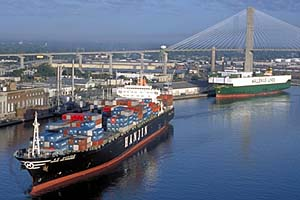The transpacific carrier market is in transition and many in the industry are trying to determine how best to profit by marginal economic growth in US markets.
This marginal growth (up 5% from this time last year) means more shippers looking for more carriers than last year. The fear is that carrier lines will not be able to “resist the temptation” to increase cargo ships to transpacific ports beyond the market demand and set the carrier industry up for flooding the market, and thus driving down freight rates.
Freight rates are already at very low levels. One leader in the industry described them as being at “an almost intolerable point.” That leader is Brian Conrad, executive administrator of the Transpacific Stabilization Agreement.
Conrad goes on to argue that carriers simply must raise their freight rates, that they cannot stay in business at the cut-rates they have previously offered to transpacific shippers. Because costs have increased, carriers must increase their shipping rates to stay viable.
 The fear is that a few desperate carriers will offer below market rates, driving down the shipping rates throughout the industry. In order to counter this potential threat to carriers, transpacific lines have collectively announced rate hikes to take effect in March and May.
The fear is that a few desperate carriers will offer below market rates, driving down the shipping rates throughout the industry. In order to counter this potential threat to carriers, transpacific lines have collectively announced rate hikes to take effect in March and May.
If the carriers are able to hold to these rate increases collectively it will mean a few key things for shippers:
A) steep increases in costs for shippers
B) reduction in transpacific shipping capacity to keep from flooding the market and provide further price-control to carriers
Overall it seems the changes in the industry favor the carriers, if they are able to maintain solidarity in pricing. A few issues remain for carriers this year however. The question of the effect of mega-ships able to transport significantly bigger cargo loads has been raised.
However, the influx of significant numbers of mega-ships to transpaciifc trade is likely not in the immediate future.
Yes, the Port of Long Beach did welcome in the MSC mega-ship, Fabiola (with Universal Cargo Management cargo onboard); but generally speaking, the ports of the transpacific trade routes are not prepared for mega-ships yet.
Raised is the possibility that mega-ships will be deployed by carriers to other sea-shipping routes and carriers will send their smaller vessels to transpacific shipping-ways instead and run the risk of flooding the still fragile US-Asia shipping market in an attempt to recoup their losses from previous years.
Whether considering mega-ships, import and export demand, economy growth, etc, the theme for carriers is clear: freight rates, freight rates, freight rates.
The American Shipper article by Eric Johnson that served as the main source for this blog, opened with, “Try as the liner shipping industry might to portray a situation that rates aren’t the only factor in service contract negotiations, the reality is clear: the transpacific trade is preoccupied with rates.”
That full article can be read at Brilliant Globe Logistics.
Carriers have to bring freight rates up to survive after the billions of dollars lost in falling freight rates last year.
Shippers should counter rate increases with demands for better transpacific import and export service like increased reliability for on-time deliveries, for example.
